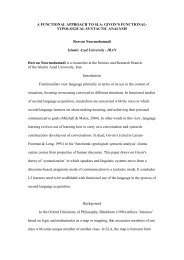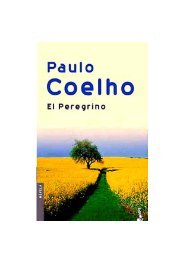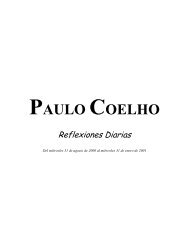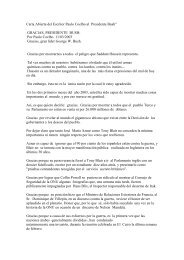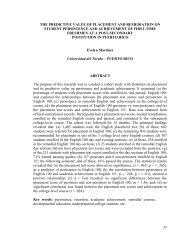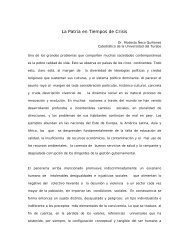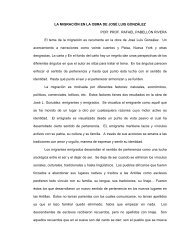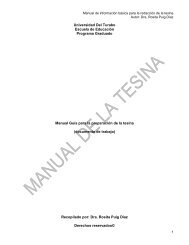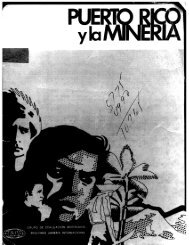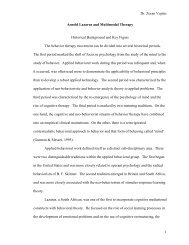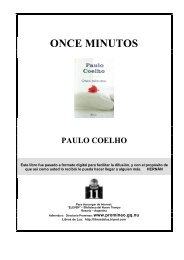Jennet Rodriguez Betancourt
Jennet Rodriguez Betancourt
Jennet Rodriguez Betancourt
You also want an ePaper? Increase the reach of your titles
YUMPU automatically turns print PDFs into web optimized ePapers that Google loves.
nostalgia and a deep urgency to revisit, and record moments and places left behind. In<br />
Advertencia a los lectores, he writes “Al escribirlo me propuse pintar la sociedad tal cual<br />
existía en el año 1842, cuando me trasladé a aquella ciudad teniendo solo diecinueve<br />
años” (Alonso xli).<br />
This young author who published under the pen name of El Gibaro de Caguas<br />
wrote El Gibaro, a collection of vignettes about customs (cuadro de costumbres) in prose<br />
and verse which consist of 20 scenes, writings dedicated to several friends, and other<br />
articles in two parts. An expanded 2 nd edition was published in 1847, where a more<br />
mature Alonso continued to write about earlier themes, with more explicit criticisms, a<br />
short story, Perico Paciencia, as well as a prologue written by Salvador Brau which<br />
scholars today consider a valuable piece of literary criticism. Many of the vignettes<br />
present portraits of Creole every day life, in which Alonso masterfully transcribes and<br />
imitates rural speech patterns. This author not only gathers the customs and traditions of<br />
the island’s modest rural folk, but as Acevedo points out<br />
“… las enjuicia de acuerdo a criterios de progreso, originalidad, y utilidad económica y<br />
social. El interés en los asuntos de Puerto Rico, el patriotismo critico y activo, la<br />
intención didáctica de ensenar deleitando, el humorismo, el optimismo cauteloso y la<br />
simpatía por lo popular son rasgos que se destacan en El Jibaro y que encaminan nuestra<br />
literatura por la autorreflexión y definición de lo propio” (14)<br />
Alonso was an educated Creole who assumed a peasant identity and voiced his<br />
deep sentiments about the people, the island, and the traditions. Throughout the<br />
enjoyable, humorous, and serious accounts the author depicts the activities of the<br />
romanticized rural folk “que trabaja, canta baila, se diverte, se lleva su hambra a caballo o<br />
se casa por la iglesia; que cree en brujos, hechiceros, y curanderos…” (Melendez Muñoz<br />
9




